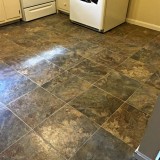Essential Aspects of Building an Armoire Closet System
Armoire closet systems are an excellent way to maximize storage space in bedrooms and other areas of the home. Building an armoire closet system requires careful planning and consideration of several essential aspects, including design, materials, and functionality. This article explores the key factors to consider when building an armoire closet system, providing insights to help you create a customized and efficient storage solution.
Design Considerations
The design of your armoire closet system should complement the overall style of your room and meet your specific storage needs. Consider the following factors:
- Size and Shape: Determine the dimensions of the armoire to ensure it fits comfortably in the available space.
- Style: Choose a design that matches the décor of the room, whether it's traditional, contemporary, or minimalist.
- Layout: Plan the interior layout to accommodate your storage needs, including shelves, drawers, and hanging rods.
Material Selection
The materials you use will impact the durability, aesthetics, and cost of your armoire closet system:
- Wood: Solid wood offers strength and durability, but it can be expensive. Laminates and veneers are more affordable options.
- Metal: Metal frames can provide additional support, especially for heavier items, but they may not be as visually appealing.
- Plastic: Plastic components are lightweight and easy to clean, but they may not be as durable as wood or metal.
Functionality Features
In addition to design and materials, consider the following functional features to enhance the usability of your armoire closet system:
- Adjustable Shelves: Adjustable shelves allow you to customize the storage space to accommodate items of different heights.
- Pull-Out Drawers: Drawers provide easy access to smaller items and can be used to organize accessories or seasonal clothing.
- Hanging Rods: Hanging rods are essential for storing clothes on hangers, ensuring they remain wrinkle-free.
Other Considerations
Before building your armoire closet system, consider these additional factors:
- Ventilation: Ensure adequate ventilation to prevent moisture buildup and potential damage to stored items.
- Lighting: Install lighting inside the armoire to improve visibility and make it easier to find what you need.
- Assembly: Determine if you have the skills and tools to assemble the armoire yourself or if professional assistance is required.
Conclusion
Building an armoire closet system involves careful consideration of several essential aspects, including design, materials, functionality, and other factors. By following these guidelines, you can create a customized and efficient storage solution that meets your specific needs and enhances the organization and aesthetics of your home.

Diy Closet System Build A Low Cost Custom The Family Handyman

How To Build A Diy Armoire Cabinet With Shelves

Diy Custom Closet Shelving For Deep Closets Home Made By Carmona Small Space Renovation

How To Build A Closet System Drawers Cubbies Belt Tie Rack

45 Closet Organization Ideas Best Diy Organizers

Tower Based Master Closet System Ana White

The Best Closet Organizers And Storage Ideas For Your Wardrobe Forbes Vetted

Everything You Need To Know About And Installing An Closet System

How To Build A Diy Closet Drawer Storage System Space Built Ins

Tower Based Master Closet System Ana White








